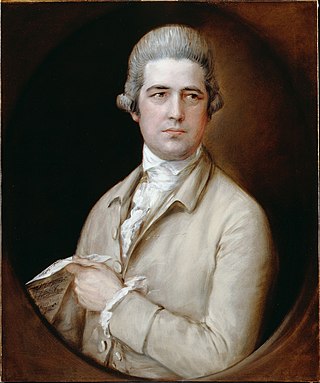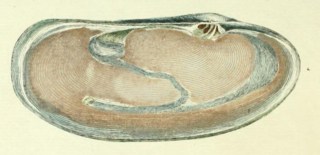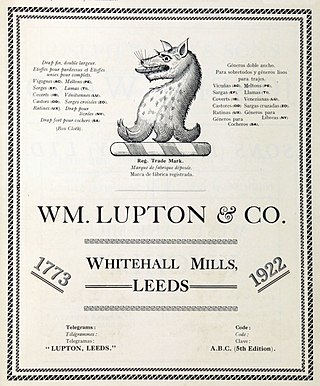Related Research Articles

Frances Brooke was an English novelist, essayist, playwright and translator. Hers was the first English novel known to have been written in Canada.

Arthur Young was an English agriculturist. Not himself successful as a farmer, he built on connections and activities as a publicist a substantial reputation as an expert on agricultural improvement. After the French Revolution of 1789, his views on its politics carried weight as an informed observer, and he became an important opponent of British reformers. Young is considered a major English writer on agriculture, although he is best known as a social and political observer. Also read widely were his Tour in Ireland (1780) and Travels in France (1792).

Elocution is the study of formal speaking in pronunciation, grammar, style, and tone as well as the idea and practice of effective speech and its forms. It stems from the idea that while communication is symbolic, sounds are final and compelling. It came into popularity in England in the eighteenth and nineteenth centuries and in America during the nineteenth century. It benefitted both men and women in different ways but overall the concept was there to teach both how to become better, more persuasive speakers, standardize errors in spoken and written English, as well as the beginnings of the formulation of argument were discussed here.

James Harris, FRS was an English politician and grammarian. He was the author of Hermes, a philosophical inquiry concerning universal grammar (1751).

Thomas Linley was an English bass and musician active in Bath, Somerset. Born in Badminton, Gloucestershire, Linley began his musical career after he moved to Bath at age 11 and became apprentice to the organist Thomas Chilcot. After his marriage to Mary Johnson in 1752, Linley at first supported his wife and growing family predominantly as a music teacher. As his children grew and he developed their musical talent, he drew an increasing amount of income from their concerts while also managing the assembly rooms in Bath. When the new Bath Assembly Rooms opened in 1771, Linley became musical director and continued to promote his children's careers. He was eventually able to move to London with the thousands of pounds which he had amassed from their concerts.

Elizabeth Frances Amherst, was an English poet and amateur naturalist. Although she remained largely unpublished during her own lifetime, she has engendered interest among twentieth- and twenty-first-century critics.
Walter Spencer-Stanhope, of Horsforth and Leeds, Yorkshire, was a British industrialist and a politician who sat in the House of Commons for various constituencies between 1775 and 1812.
The Schuyler family was a prominent Dutch family in New York and New Jersey in the 18th and 19th centuries, whose descendants played a critical role in the formation of the United States, in leading government and business in North America and served as leaders in business, military, politics, and society. The other two most influential New York dynasties of the 18th and 19th centuries were the Livingston family and the Clinton family.

Arthur William Devis was an English painter of history paintings and portraits. He painted portraits and historical subjects, sixty-five of which he exhibited (1779–1821) at the Royal Academy. Among his more famous works are a depiction of the Death of Nelson and a posthumous portrait of Nelson.

Arthur Devis was an English artist, half-brother of the painter Anthony Devis (1729–1816), and father of painters Thomas Anthony Devis (1757–1810) and Arthur William Devis (1762–1822). His place in the pages of art history is generally as a painter of the type of portrait now called a conversation piece.
John Ashburnham, 2nd Earl of Ashburnham, PC, styled Viscount St Asaph from 1730 to 1737, was a British peer and courtier.
Elizabeth Young was an English contralto and actress. She was part of a well-known English family of musicians that included several professional singers and organists during the seventeenth and eighteenth centuries.
The history of English grammars begins late in the sixteenth century with the Pamphlet for Grammar by William Bullokar. In the early works, the structure and rules of English grammar were based on those of Latin. A more modern approach, incorporating phonology, was introduced in the nineteenth century.

Ann Fisher was an English author and grammarian. A New Grammar, which appeared in 1745, made her the earliest published female author on modern English grammar, although Elizabeth Elstob had published a grammar of Anglo-Saxon in 1715.

The Lupton family in Yorkshire achieved prominence in ecclesiastical and academic circles in England in the Tudor era through the fame of Roger Lupton, provost of Eton College and chaplain to Henry VII and Henry VIII. By the Georgian era, the family was established as merchants and ministers in Leeds. Described in the city's archives as "landed gentry, a political and business dynasty", they had become successful woollen cloth merchants and manufacturers who flourished during the Industrial Revolution and traded throughout northern Europe, the Americas and Australia.
Charles Dodgson was an English Anglican cleric who served in the Church of Ireland as the Bishop of Ossory (1765–1775) then Bishop of Elphin (1775–1795).

Frances Elizabeth Lupton was an Englishwoman of the Victorian era who worked to open up educational opportunities for women. She married into the politically active Lupton family of Leeds, where she co-founded Leeds Girls' High School in 1876 and was the Leeds representative of the North of England Council for Promoting the Higher Education of Women.
Agnes Bulmer was an English poet. She is believed to have written the longest epic poem ever written by a woman. The piece, Messiah's Kingdom, took over nine years to complete.

Ann Murry was an English children's educational writer and poet who discussed geography, grammar, virtue and etiquette, arithmetic, religion, and history.

Reading Abbey Girls' School, also known as Reading Ladies’ Boarding School, was an educational establishment in Reading, Berkshire open from at least 1755 until 1794. Many of its pupils went on to make a mark on English culture and society, particularly as writers. Most famous is Jane Austen, who used the school as a model of "a real, honest, old-fashioned Boarding-school".
References
- ↑ Potter, Simeon (1965). "Review of An Historical Syntax of the English Language. Part One: Syntactical Units with One Verb". The Modern Language Review. 60 (2): 234–236. doi:10.2307/3720065. ISSN 0026-7937. JSTOR 3720065.
- 1 2 Paviere, Sydney H. (1950). The Devis Family of Painters. Leigh-on-Sea: Lewis.
- ↑ Percy, Carol (1994). "Paradigms for their Sex? Women's Grammars in Late Eighteenth-Century England". Histoire Épistemologie Langage. 16: 123.
- ↑ By a Society of Gentlemen (1775). "Review of Devis". The Critical Review: or, Annals of Literature . the thirty-ninth.
- 1 2 Cajka, Karen (2003). The Forgotten Women Grammarians of Eighteenth-Century England. University of Connecticut.